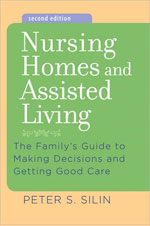Neuropathic Pain
Free Information Session on NEUROPATHIC PAIN
Monday, June 18th, 7:00-9:00 at Vancouver Public Library
Neuropathic pain is pain caused by a condition affecting the nervous system (nerves, spinal cord or brain).
Nerves normally carry messages from parts of your body to your brain, via the spinal cord. When you touch a hot stove, nerves carry the pain message from your hand to your spinal cord. The message then goes up the spinal cord to the brain. The brain responds by sending a message back down the spinal cord to the hand, telling your hand to move away from the source of the pain.
Like any other part of the body, nerves can be damaged through injury or disease. If a damaged nerve stops working properly, it may send the wrong messages to the brain. This can result in the brain indicating on-going distress when this is no longer the case. This is neuropathic pain.
(From www.nepknowmore.ca)
Labels: Pain and Aging



